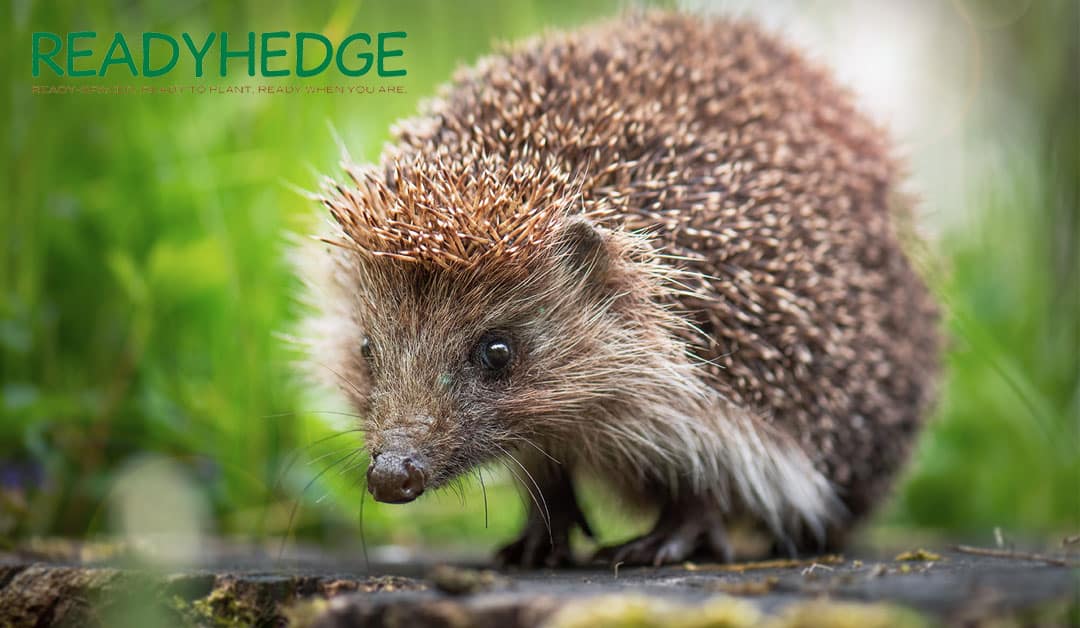Protecting the wildlife of this country is absolutely paramount, and here at Readyhedge, we’re passionate about creating the best environment for wildlife – helping them not only survive, but positively thrive again.
Hedgehogs are a much-loved part of our countryside and we need to protect them and give them the best possible chance of survival, so we’ve outlined what all of us can do with our hedges to give our special spiky friends a blissful existence.
Hedgehogs like to live in hedges where they can forage for food and feel protected by the thick, wide bases that a hedge can offer.
Hedgehogs forage in ‘field margins’ – which is the perfect environment to find invertebrates like woodlice, millipedes, beetles and ants.
A varied growth of hedge species, including bramble, different plants and good vegetation will help to create an assortment of micro-habitats that invertebrates love. And that’s where the hedgehog is going to thrive.
Hedgehogs utilise the thick bases of hedges for shelter during the day and protection during their months of hibernation. They also build their nests under the low growth of bramble interspersed into hedgerows.
It’s really important that hedgehogs can get to water, so a shallow hedge ditch can provide damp areas for them to use throughout the year. The ditch should be shallow in-depth and have gently sloping sides in order for easy access to water.
The shallow ditches also attract the habitation of slugs and snails – a staple diet of older hogs!
A good hedge for hedgehogs would be densely packed with foliage, with no gapping, to allow the hedgehog to move around safely. They tend to avoid wide, open spaces which leaves them vulnerable and susceptible to prey.
Managing such a hedge is easy, because they’re perfect for hedgehogs when they’re overgrown and a bit wild. We suggest cutting them back once every 3 years to encourage the base to thicken out and the foliage to knit together between the plants. Keep the ditches shallow and make sure that the sloping sides aren’t too steep to cause the hedgehog to get trapped in the ditch.
The best hedge types for encouraging wildlife, including hedgehogs are thick, quick-growing varieties, with spikey branches and dense foliage. Some of the best examples of hedging to encourage wildlife are:
Hawthorn Hedging – this shrub plays a perfect part in providing safe and comfortable nesting spaces for hedgehogs. In Autumn, it produces juicy red berries which are a fantastic food source too!
Mixed native Hedging – These are intended to mimic the natural field hedges that you see all over the UK. They are based on hawthorn and have other plants in them that you would find in most hedgerows.
Holly Hedging – Ilex aquifolium ‘Alaska’ is harder than normal Holly, it is tolerant to atmospheric pollution and most soil types apart from wetness. A good evergreen hedge that can produce red berries in the right situation.
Our team are passionate horticulturalists with a keen interest in protecting wildlife by what we supply. Our reputation has been built on our expertise, the quality of our hedges and screens and our commitment to our customers.
Here at Readyhedge, we have a huge range of hedge and screening varieties that attract and support wildlife. Take a look at our website www.readyhedgeltd.com or come or give us a call on 01386 750585 – we’d be happy to answer your questions and advise you on the best hedgerows to suit you and your needs.

